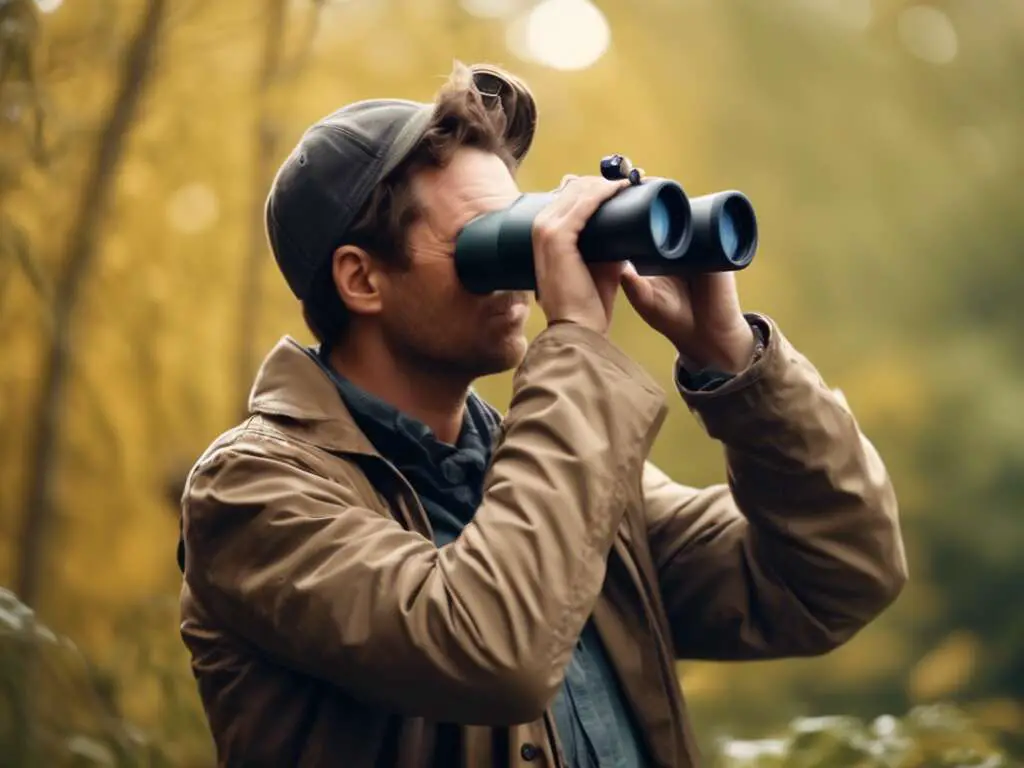Birdwatching, also known as birding, is a fascinating hobby that allows nature enthusiasts to observe and appreciate the diverse world of avian species. However, like any outdoor activity, it comes with its own set of unwritten rules and best practices. This comprehensive guide will walk you through the essential aspects of birdwatching etiquette, ensuring that your birding experiences are enjoyable, respectful, and environmentally responsible.
Table of Contents
- 1 Understanding the Importance of Birdwatching Etiquette
- 2 Preparing for Your Birdwatching Adventure
- 3 Respecting Birds and Their Habitats
- 4 Interacting with Fellow Birders
- 5 Ethical Photography and Recording
- 6 Leave No Trace Principles in Birdwatching
- 7 Engaging in Citizen Science and Conservation
- 8 Birdwatching in Different Environments
- 9 Birdwatching with Special Equipment
- 10 Educating Others and Spreading Ethical Practices
- 11 The Future of Ethical Birdwatching
- 12 Conclusion: The Mindful Birder
- 13 Author
Understanding the Importance of Birdwatching Etiquette
Birdwatching etiquette is more than just a set of polite behaviors; it’s a crucial aspect of conservation and responsible wildlife observation. By following proper etiquette, you not only enhance your own birding experience but also contribute to the preservation of bird habitats and the well-being of the birds themselves.
Key reasons why birdwatching etiquette matters:
- Bird welfare: Proper etiquette minimizes disturbance to birds, ensuring their natural behaviors and habitats remain intact.
- Conservation: Ethical birding practices contribute to broader conservation efforts by protecting ecosystems.
- Community respect: Following etiquette shows respect for fellow birders and maintains positive relationships within the birding community.
- Legal compliance: Many etiquette guidelines align with local and national wildlife protection laws.
- Sustainable hobby: Ethical practices ensure that birdwatching remains a sustainable and enjoyable activity for future generations.
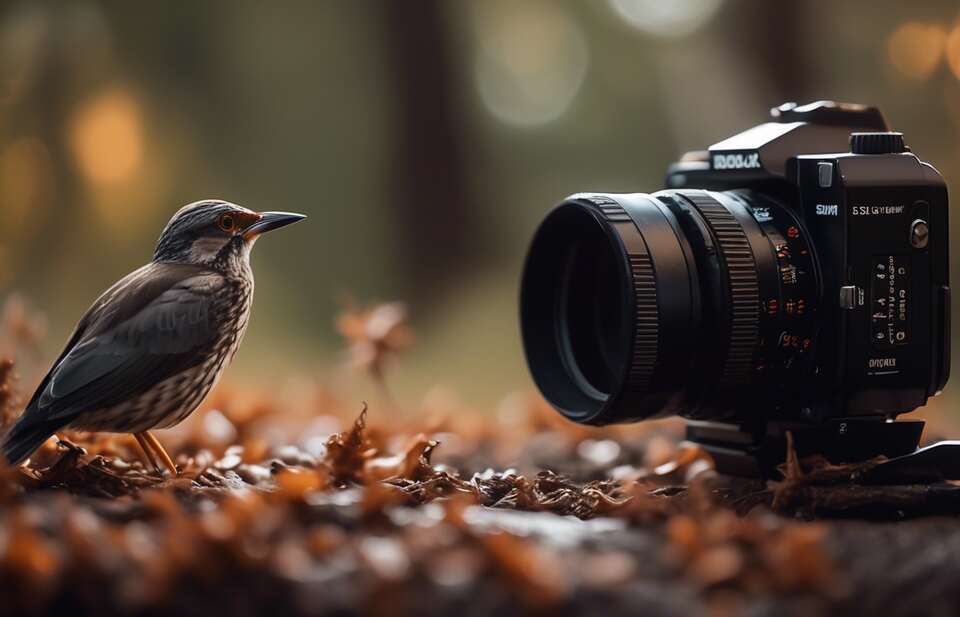
Preparing for Your Birdwatching Adventure
Before you head out to observe birds, it’s essential to prepare adequately. Proper preparation not only enhances your birding experience but also helps you adhere to birdwatching etiquette more easily.
Essential Gear for Ethical Birdwatching
Having the right equipment is crucial for responsible birdwatching. Here’s a list of essential items:
- Binoculars: A good pair of binoculars allows you to observe birds from a distance, minimizing disturbance.
- Field guide: A comprehensive bird identification guide helps you recognize species without getting too close.
- Notebook and pen or checklist: For recording your observations without relying on photography.
- Appropriate clothing: Wear muted colors to blend in with the environment and avoid startling birds.
- Comfortable, quiet shoes: To move silently through birding areas.
- Water and snacks: Stay hydrated and energized without needing to leave the area frequently.
- First-aid kit: For minor emergencies, reducing the need to disrupt your surroundings.
Researching Your Destination
Before visiting a birding location, take time to research the area:
- Local regulations: Familiarize yourself with any specific rules or guidelines for the area.
- Seasonal considerations: Learn about breeding seasons, migration patterns, and any temporary restrictions.
- Rare or sensitive species: Be aware of any vulnerable bird populations in the area and special precautions to take.
- Best observation points: Identify designated viewing areas to avoid trampling sensitive habitats.
Respecting Birds and Their Habitats
The cornerstone of birdwatching etiquette is showing respect for the birds and their natural environments. This section covers the essential practices to ensure your presence has minimal impact on avian life.
Maintaining a Safe Distance
One of the most critical aspects of ethical birdwatching is maintaining an appropriate distance from the birds you’re observing. This practice is essential for several reasons:
- Stress reduction: Keeping your distance prevents unnecessary stress on birds, which can affect their feeding, mating, and nesting behaviors.
- Natural behavior observation: By staying far enough away, you’re more likely to witness genuine, undisturbed bird behavior.
- Safety: Some birds may become aggressive if they feel threatened, especially during nesting season.
Guidelines for maintaining distance:
- Use the “field of view” rule: If a bird occupies more than 1/4 of your binocular view, you’re likely too close.
- Stay on designated paths and viewing platforms whenever possible.
- If a bird shows signs of distress (alarm calls, wing-flapping, or flying away), slowly and quietly increase your distance.
Minimizing Noise and Disturbance
Birds are highly sensitive to sound and movement. To observe them effectively and ethically, it’s crucial to minimize the disturbance you create:
- Speak quietly: Use hushed tones when communicating with fellow birders.
- Silence electronic devices: Turn off phone ringers and camera sounds.
- Move slowly and deliberately: Sudden movements can startle birds and other wildlife.
- Be mindful of your shadow: Especially in early morning or late afternoon, your shadow can alarm birds if it falls across their location.
Respecting Nesting Sites
Nesting season is a particularly vulnerable time for birds. Extra caution is needed during this period:
- Identify signs of nesting: Look for birds carrying nesting materials or food, or exhibiting defensive behaviors.
- Keep a greater distance from nests: Even if you discover a nest, resist the temptation to approach for a closer look.
- Limit the time spent observing nests: Extended observation can stress parent birds and potentially expose eggs or chicks to predators.
- Never touch eggs or chicks: It’s a myth that human scent will cause parents to abandon their young, but handling can cause real harm.
The Ethics of Baiting and Calling
The use of bait or recorded bird calls to attract birds is a contentious issue in the birdwatching community. While these methods can provide close-up views, they can also disrupt natural behaviors and potentially harm birds.
Considerations regarding baiting:
- Artificial feeding: Can alter natural foraging behaviors and diets.
- Dependency: Regular baiting may cause birds to become dependent on artificial food sources.
- Predator attraction: Baiting can inadvertently attract predators to feeding birds.
Guidelines for using recorded calls:
- Use sparingly and for short durations.
- Avoid using calls during breeding seasons when it may disrupt mating or nesting behaviors.
- Never use recordings to attract threatened or endangered species.
Many birdwatching organizations and protected areas prohibit or strongly discourage these practices. Always check local regulations and err on the side of caution.

Interacting with Fellow Birders
Birdwatching is often a social activity, and proper etiquette extends to how you interact with other birders in the field. Fostering a sense of community and mutual respect enhances the experience for everyone involved.
Sharing Observations and Discoveries
One of the joys of birdwatching is sharing your discoveries with others. However, it’s important to do so considerately:
- Use quiet signals: Develop a system of hand signals with your group to communicate silently about bird sightings.
- Share your scope: If you’ve spotted an interesting bird through your spotting scope, offer other nearby birders a look, but be mindful of time if others are waiting.
- Be inclusive: If you notice a novice birder struggling to locate a bird, offer assistance in a friendly, non-patronizing manner.
- Respect privacy: Some birders prefer solitude. If someone seems uninterested in interaction, give them space.
Group Birding Etiquette
When birdwatching in a group, whether it’s an organized tour or an informal gathering, additional considerations come into play:
- Follow the leader: In guided groups, respect the pace and decisions of the tour leader.
- Take turns: Ensure everyone in the group has an opportunity to view birds through scopes or from prime viewing positions.
- Be aware of your position: Don’t block others’ views, and be mindful of your camera or scope placement.
- Arrive on time: For organized outings, punctuality shows respect for the group and maximizes birding time.
- Share knowledge appropriately: If you’re an experienced birder, share your expertise when it’s welcome, but avoid dominating the experience of others.
Handling Rare Bird Sightings
Discovering a rare bird can be exciting, but it’s important to handle such situations responsibly:
- Verify the sighting: Before reporting, ensure you’ve correctly identified the bird to avoid false alarms.
- Consider the implications: Think about whether publicizing the sighting could lead to habitat disturbance from an influx of birders.
- Report responsibly: Use official rare bird alert systems rather than broadcasting on social media, which can lead to uncontrolled crowds.
- Provide accurate, ethical directions: If sharing the location, give precise directions to minimize searching and potential habitat damage.
- Monitor the situation: If you’re local to the area, consider helping to manage visitor behavior around the rare bird sighting.
Ethical Photography and Recording
With the rise of digital photography and recording devices, capturing images and sounds of birds has become increasingly popular among birders. While these practices can contribute valuable data to citizen science projects and personal enjoyment, they also present unique ethical challenges.
Photography Best Practices
Bird photography can be a rewarding aspect of birdwatching, but it’s crucial to prioritize the well-being of your subjects:
- Use appropriate equipment: Long lenses allow you to capture detailed images from a safe distance.
- Never alter the environment: Don’t remove branches, leaves, or other natural elements for a “better shot.”
- Avoid using flash: Sudden bright lights can startle and disorient birds.
- Be patient: Wait for the bird to present itself naturally rather than trying to manipulate its behavior or position.
- Limit your time: Don’t spend excessive time photographing one individual or group of birds.
- Be especially cautious around nests: Prolonged photography sessions near nests can stress parent birds and expose young to predators.
Responsible Use of Recordings
Audio recordings of bird calls can be useful for identification and research, but they must be obtained and used ethically:
- Minimize playback: Limit the use of recorded calls to attract birds, especially in popular birding areas.
- Keep volume low: When using playback, use the minimum volume necessary.
- Avoid overuse: Don’t repeatedly play calls to the same birds or in the same area.
- Respect breeding seasons: Refrain from using call playback during nesting periods.
- Follow local regulations: Many protected areas and nature reserves prohibit the use of recorded calls.
Sharing Images and Data Responsibly
In the age of social media and online birding communities, sharing your photographs and observations can contribute to citizen science and inspire others. However, it’s important to do so responsibly:
- Protect sensitive locations: Avoid disclosing exact locations of vulnerable species or nesting sites.
- Be honest about your methods: If you’ve used baiting or extensive call playback to obtain an image, disclose this information.
- Educate through your sharing: Use your platform to promote ethical birdwatching practices.
- Contribute to citizen science: Consider submitting your observations to databases like eBird to support conservation research.
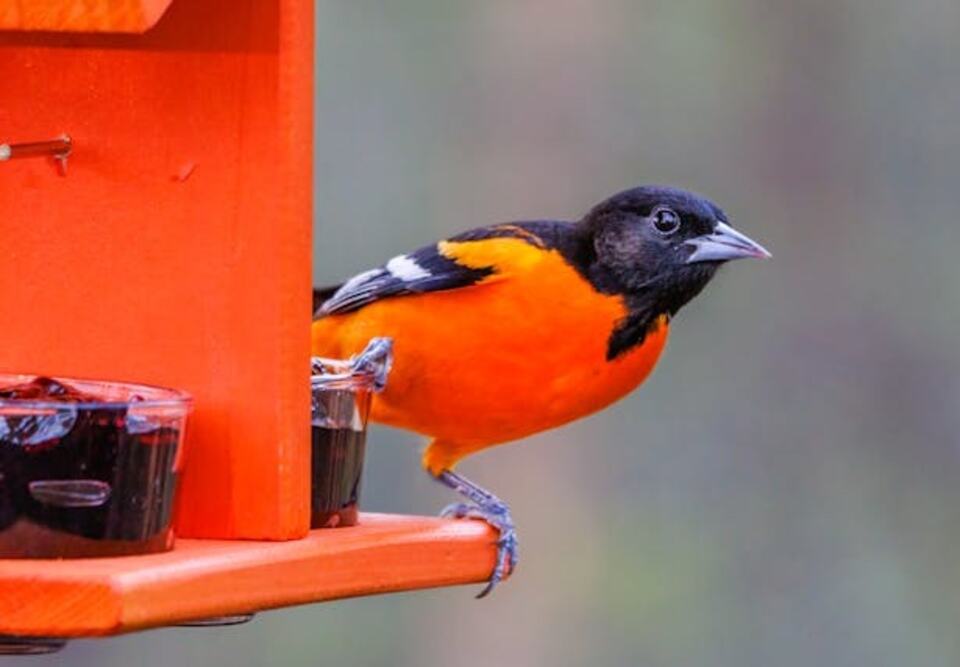
Leave No Trace Principles in Birdwatching
The Leave No Trace (LNT) ethics, originally developed for wilderness camping, apply equally to birdwatching. These principles ensure that our pursuit of avian observation doesn’t come at the cost of environmental degradation.
Plan Ahead and Prepare
Proper planning is the foundation of responsible birdwatching:
- Know the regulations: Familiarize yourself with local rules and obtain necessary permits.
- Be prepared for weather: Dress appropriately to avoid the need for emergency changes to your plans.
- Bring necessary supplies: Pack enough water, food, and gear to avoid relying on natural resources.
Travel and Camp on Durable Surfaces
When birdwatching, stick to established trails and observation points:
- Stay on the path: Veering off-trail can damage sensitive vegetation and disturb wildlife.
- Use designated campsites: If your birdwatching trip involves overnight stays, use established campgrounds.
- Avoid creating new trails: Even if a shortcut seems tempting, stick to existing paths to prevent erosion and habitat fragmentation.
Dispose of Waste Properly
Proper waste management is crucial for maintaining the health of bird habitats:
- Pack it in, pack it out: Carry out all trash, leftover food, and litter.
- Use restroom facilities: When available, use designated restrooms. In remote areas, follow proper waste burial practices.
- Avoid feeding wildlife: Properly dispose of food waste to prevent attracting animals and altering their natural diets.
Leave What You Find
Preserving the natural environment is key to sustainable birdwatching:
- Leave natural objects undisturbed: Don’t collect feathers, nests, or other natural items.
- Avoid introducing non-native species: Clean your gear between locations to prevent the spread of invasive plants or organisms.
- Respect archaeological sites: Many prime birding locations may also be culturally significant areas. Observe, but don’t disturb these sites.
Minimize Campfire Impacts
If your birdwatching involves camping:
- Use established fire rings: When fires are permitted, use designated areas.
- Keep fires small: Large fires can damage soil and vegetation.
- Fully extinguish fires: Ensure all embers are out and cold to the touch before leaving.
Respect Wildlife
This principle is at the heart of birdwatching etiquette:
- Observe from a distance: Use binoculars, spotting scopes, and telephoto lenses.
- Do not feed wildlife: Feeding can alter natural behaviors and diets.
- Store food securely: When camping, use bear-proof containers or hang food to avoid attracting wildlife to your campsite.
- Control pets: Keep dogs on leashes and under control, or leave them at home if they might disturb wildlife.
Be Considerate of Other Visitors
Respecting fellow outdoor enthusiasts enhances everyone’s experience:
- Yield to others: On narrow trails, give way to other users.
- Keep noise levels down: Enjoy nature’s sounds and allow others to do the same.
- Be mindful of your impact: Large groups can have a significant impact; consider breaking into smaller groups in popular areas.
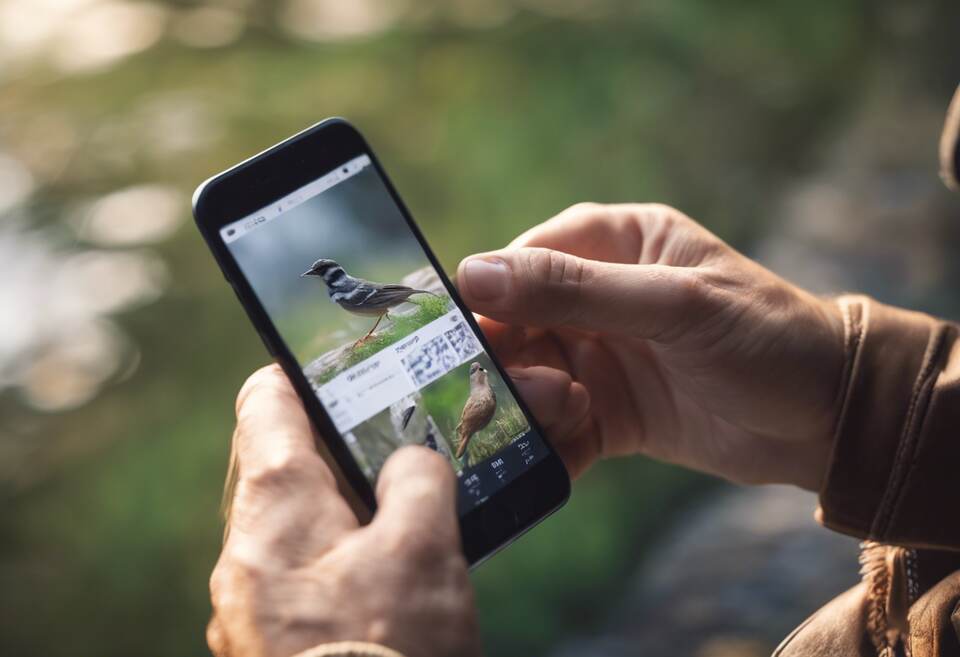
Engaging in Citizen Science and Conservation
Birdwatching can be more than just a hobby; it can be a valuable contribution to scientific research and conservation efforts. Engaging in citizen science not only enhances your birdwatching experience but also helps in the broader understanding and protection of bird species.
Participating in Bird Counts and Surveys
Many organizations conduct regular bird counts and surveys that rely on data from volunteer birders:
- Christmas Bird Count: Organized by the National Audubon Society, this annual event engages birders to count birds within specific areas during the holiday season.
- Great Backyard Bird Count: A global event that encourages people to count birds in their local areas for a few days in February.
- Breeding Bird Surveys: These surveys help track bird populations during the breeding season.
How to participate effectively:
- Follow protocols: Adhere strictly to the counting methods and reporting procedures specified by the organizers.
- Be accurate: Report only birds you can confidently identify. It’s better to omit a bird than to report an incorrect identification.
- Be consistent: If you participate regularly, try to cover the same area each time for more valuable long-term data.
Using Birding Apps and Databases
Several mobile apps and online databases allow birders to contribute their observations to larger datasets:
- eBird: A global database for bird observations, managed by the Cornell Lab of Ornithology.
- iNaturalist: A platform for recording observations of all types of wildlife, including birds.
- BirdTrack: A UK-based system for recording bird sightings.
Best practices for using these tools:
- Report in real-time: When possible, submit your observations while still in the field for the most accurate location data.
- Include behavioral notes: Observations about feeding, nesting, or unusual behaviors can be particularly valuable.
- Add photos or audio: When available, include media to support your observations, especially for rare or unusual sightings.
Supporting Local Conservation Efforts
Birdwatchers can play a crucial role in local conservation initiatives:
- Join local bird clubs: These organizations often engage in habitat restoration and protection efforts.
- Volunteer for habitat management: Many nature reserves and wildlife areas rely on volunteers for tasks like invasive species removal or trail maintenance.
- Participate in advocacy: Support local initiatives for bird-friendly policies, such as reducing light pollution or protecting wetlands.
Ways to maximize your impact:
- Educate yourself: Learn about the specific conservation challenges in your area.
- Share your skills: Offer your unique talents, whether it’s photography, writing, or data analysis, to support local conservation groups.
- Donate strategically: Consider supporting organizations that focus on habitat protection and research in your region.
Birdwatching in Different Environments
Different birding environments present unique challenges and require specific etiquette considerations. Understanding these can help you adapt your behavior to various settings.
Urban and Suburban Birdwatching
Observing birds in populated areas requires a balance between your birding interests and respect for private property and public spaces:
- Respect private property: Always obtain permission before entering private land.
- Be aware of your surroundings: In parks and public spaces, be mindful of other users like joggers or picnickers.
- Use urban observation points: Take advantage of rooftop gardens, city parks, and even your own backyard.
- Participate in urban bird projects: Many cities have initiatives to make urban environments more bird-friendly.
Coastal and Wetland Birding
Coastal areas and wetlands are crucial habitats for many bird species but are also particularly sensitive environments:
- Stay on designated paths: Wetlands can be easily damaged by foot traffic.
- Be cautious during nesting season: Many shorebirds nest on beaches; avoid disturbing nesting areas.
- Respect tide times: Be aware of tidal patterns to avoid getting stranded or disturbing feeding patterns.
- Clean your gear: Prevent the spread of invasive species by cleaning boots and equipment between different wetland sites.
Forest and Woodland Birdwatching
Forests provide unique opportunities for bird observation but come with their own set of challenges:
- Move quietly: Sound travels far in forests; minimize noise to avoid disturbing wildlife.
- Watch your step: Be careful not to damage understory plants or step on ground-nesting birds.
- Be prepared: Forests can be disorienting; always carry a map and compass or GPS.
- Respect hunting seasons: In areas where hunting is permitted, wear bright colors and be aware of seasonal restrictions.
Pelagic Birdwatching
Observing seabirds from boats requires additional considerations:
- Follow boat etiquette: Listen to the captain’s instructions and respect fellow passengers’ viewing opportunities.
- Be prepared for motion: Use a camera strap and secure your binoculars to prevent dropping them into the water.
- Don’t feed the birds: It’s often illegal and can harm seabirds by altering their natural behaviors.
- Be patient: Seabird sightings can be unpredictable; enjoy the entire experience of being out on the water.
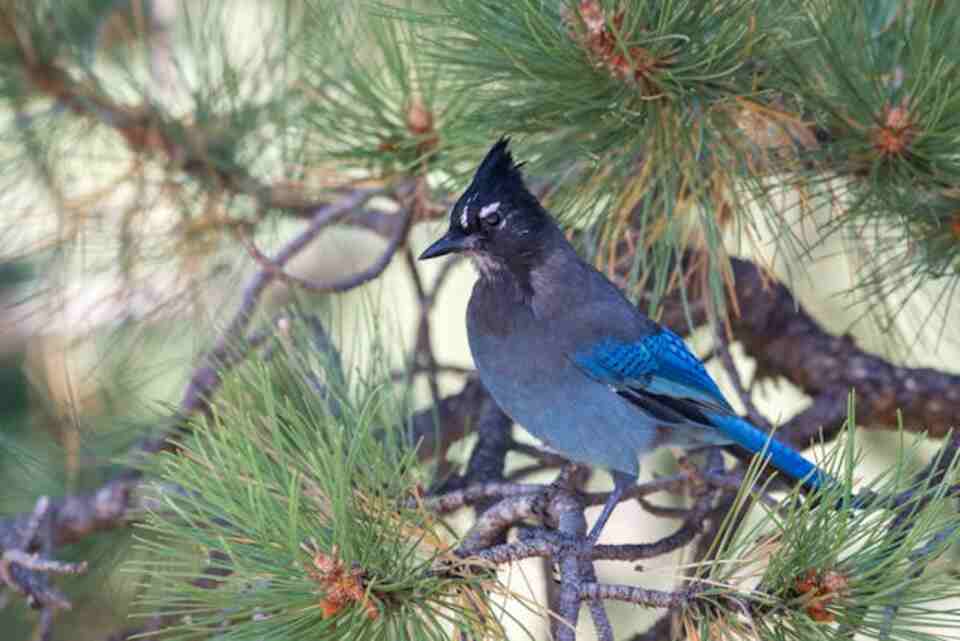
Birdwatching with Special Equipment
As technology advances, new tools become available to enhance the birdwatching experience. However, these tools come with their own ethical considerations.
Using Drones in Birdwatching
Drones can provide unique perspectives but pose significant risks to birds and their habitats:
- Know the laws: Many areas prohibit or restrict drone use, especially in wildlife areas.
- Maintain distance: Keep drones far from birds to prevent stress or collision.
- Avoid breeding areas: Never use drones near nesting sites or during breeding seasons.
- Be mindful of other birders: Drone noise can disrupt the experience for others.
Night Vision and Thermal Imaging
These technologies can offer insights into nocturnal bird behavior but should be used responsibly:
- Minimize light use: Even infrared light can disturb some species.
- Respect closing times: Many natural areas are closed after dark; always obtain necessary permissions.
- Share findings ethically: Be cautious about sharing locations of sensitive nocturnal species.
Educating Others and Spreading Ethical Practices
As an experienced birder, you have the opportunity to influence others and promote responsible birdwatching practices.
Mentoring Novice Birders
Guiding new enthusiasts is a rewarding way to ensure the continuation of ethical birdwatching:
- Lead by example: Demonstrate proper etiquette in the field.
- Explain the ‘why’: Help novices understand the reasons behind ethical practices.
- Encourage patience: Teach new birders the value of waiting and observing quietly.
- Promote conservation mindset: Connect the joy of birdwatching with the importance of habitat protection.
Addressing Unethical Behavior
Occasionally, you may encounter others engaging in problematic behaviors. Addressing these situations requires tact:
- Approach calmly: Begin with the assumption that the person may be unaware of proper etiquette.
- Educate, don’t scold: Offer information about why certain behaviors can be harmful.
- Provide alternatives: Suggest better ways to observe or photograph birds.
- Know when to involve authorities: For serious violations, contact local wildlife officials or park rangers.
The Future of Ethical Birdwatching
As our understanding of bird behavior and ecology deepens, birdwatching practices continue to evolve. Staying informed about current research and emerging guidelines is crucial for ethical birders.
Emerging Technologies and Ethical Considerations
New technologies continually present both opportunities and challenges for birdwatchers:
- AI-powered identification apps: While helpful, these should complement, not replace, traditional identification skills.
- Tracking devices: The use of tags and transmitters on birds is becoming more common in research but raises questions about impact on individuals.
- Social media and rare bird alerts: Instant communication about rare sightings can lead to overcrowding; consider the implications before sharing.
Climate Change and Birdwatching Ethics
As climate change affects bird populations and migrations, ethical considerations for birdwatchers may shift:
- Adaptive strategies: Be prepared to adjust your birdwatching practices as species ranges and behaviors change.
- Citizen science importance: Your observations become increasingly valuable for tracking these changes.
- Carbon footprint awareness: Consider the environmental impact of travel to birding locations and explore local alternatives.
Conclusion: The Mindful Birder
Ethical birdwatching is a practice of mindfulness, requiring constant awareness of our impact on the natural world. By following these guidelines, you not only enhance your own birdwatching experience but also contribute to the broader goals of conservation and environmental stewardship.
Remember that at its core, birdwatching is about connection – connection with nature, with fellow enthusiasts, and with the remarkable creatures that have captivated human imagination for centuries. As you venture out with binoculars in hand, carry with you the responsibility to observe with respect, learn with humility, and share with care.
By embracing these principles of birdwatching etiquette, you become more than just an observer; you become a guardian of the skies, a citizen scientist, and a vital link in the chain of conservation efforts that span the globe. Your actions, no matter how small they may seem, ripple outward, influencing both the natural world and the community of birders around you.
So step out into nature, listen for the call of distant wings, and remember: in the world of ethical birdwatching, the joy of discovery is matched only by the satisfaction of knowing that your presence leaves no trace, save for the lasting memories and valuable data you carry with you.
Happy birding, and may your encounters with the avian world be as enriching as they are responsible.

